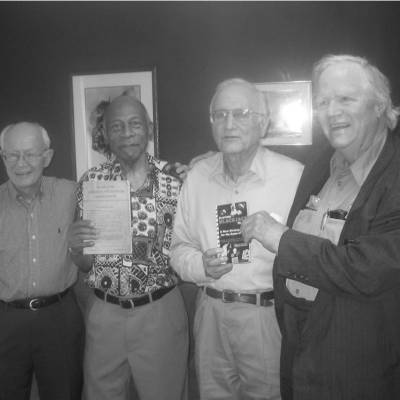
Herbert Maisel
Childhood
Information regarding Herbert Maisel's early childhood is not readily available.
Career
Maisel's most significant contribution to the gambling world came during his time as a private in the U.S. Army stationed at Aberdeen Proving Ground in the 1950s. Intrigued by the rules of blackjack, he joined forces with fellow soldiers Roger Baldwin, Wilbert Cantey, and James McDermott. This unlikely quartet, leveraging their mathematical prowess and the rudimentary desk calculators available at the time, embarked on a groundbreaking project to determine the best playing strategy based on the player's and dealer's visible cards.
Their diligent work culminated in formulating the "Basic Strategy," a set of rules that minimizes the player's long-term losses to the casino. This strategy was first published in an analytical study in the Journal of the American Statistical Association in September 1956. Subsequently, their findings were compiled into the influential book Playing Blackjack to Win, published in 1957. This book included a pull-out strategy chart detailing when to hit, stand, double down, and split pairs.
Interestingly, their book also contained the first published, albeit rudimentary, card-counting system. While not potent enough to guarantee a player advantage, it was a significant step in understanding the potential for gaining an edge over the house. After his time in the Army, Maisel pursued a career in academia.
He became a respected computer science professor at Georgetown University, demonstrating a continued aptitude for logic and analysis in a different field.
Personal life
Details about Herbert Maisel's personal life beyond his involvement with the "Four Horsemen" and his academic career are scarce. He passed away in 2019 at the age of 88.
Revenue
It is important to note that the "Four Horsemen," including Herbert Maisel, were primarily researchers and analysts. Their aim was to discover and publish the optimal blackjack strategy, not to personally profit from gambling. While their book Playing Blackjack to Win likely generated some revenue, their primary impact was on the understanding and evolution of the game itself, rather than direct financial gain from casino play.
Interesting facts
Despite being part of a group that revolutionized the blackjack strategy, Maisel was the only "Four Horsemen" member who did not hold a college degree at the time of their groundbreaking research. He later earned his academic credentials.
The "Four Horsemen" conducted their complex calculations using only basic desk calculators, highlighting their ingenuity and dedication given the limited technology of the era.
Their work was initially published in a prestigious statistical journal, underscoring the academic rigor behind their findings.
Maisel and his colleagues' research laid the groundwork for future advancements in blackjack strategy, including the more sophisticated card-counting techniques developed later.
Legacy
Herbert Maisel, along with Baldwin, Cantey, and McDermott, left an indelible mark on the gambling world. Their "Basic Strategy" remains a fundamental tool for any serious blackjack player, providing statistically optimal decisions in various game scenarios. They are rightfully recognized as the pioneers who brought a scientific approach to a game previously dominated by intuition and luck.
Their work was so impactful that it directly inspired mathematician Edward O. Thorp, who used their data to develop the first viable card-counting system, documented in his seminal book Beat the Dealer. Thorp himself acknowledged the foundational role of the "Four Horsemen," stating he "stood on the shoulders of four giants."
In recognition of their monumental contribution, Herbert Maisel and the other "Four Horsemen of the Apocalypse" members were unanimously inducted into the Blackjack Hall of Fame in 2008. This honor cemented their place as legends in the history of the game.
Frequently asked Questions
Herbert Maisel was one of the four U.S. Army engineers, known as the "Four Horsemen of the Apocalypse," who developed the first mathematically sound Basic Strategy for the game of blackjack in the 1950s.
Maisel, along with his colleagues, meticulously calculated the optimal playing decisions in blackjack based on the player's and dealer's cards. Their work, published in the Journal of the American Statistical Association and the book Playing Blackjack to Win, provided the foundation for modern blackjack strategy and significantly reduced the house edge for informed players.
No. Maisel and the other "Four Horsemen" were researchers who aimed to understand and optimize the game of blackjack. Their primary focus was on analysis and publication, not on personal financial gain through gambling.
The Basic Strategy is a set of rules that dictates the statistically best action a player should take (hit, stand, double down, split) in any given blackjack hand based on their own two cards and the dealer's face-up card. Following the Basic Strategy minimizes the player's long-term losses.
Gambling author Dr. Allan N. Wilson coined this dramatic term in his 1965 book The Casino Gambler’s Guide to highlight their work's profound impact on the game of blackjack. He suggested it heralded a new era of strategic play that challenged the casinos' traditional advantage.
Yes. In 2008, Herbert Maisel and the other three members of the "Four Horsemen" were inducted into the Blackjack Hall of Fame for their pioneering contributions to the game.
















